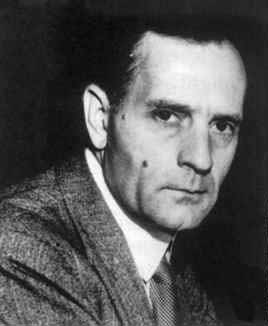

تاريخ الرياضيات

الاعداد و نظريتها

تاريخ التحليل

تار يخ الجبر

الهندسة و التبلوجي


الرياضيات في الحضارات المختلفة

العربية

اليونانية

البابلية

الصينية

المايا

المصرية

الهندية


الرياضيات المتقطعة

المنطق

اسس الرياضيات

فلسفة الرياضيات

مواضيع عامة في المنطق


الجبر

الجبر الخطي

الجبر المجرد

الجبر البولياني

مواضيع عامة في الجبر

الضبابية

نظرية المجموعات

نظرية الزمر

نظرية الحلقات والحقول

نظرية الاعداد

نظرية الفئات

حساب المتجهات

المتتاليات-المتسلسلات

المصفوفات و نظريتها

المثلثات


الهندسة

الهندسة المستوية

الهندسة غير المستوية

مواضيع عامة في الهندسة

التفاضل و التكامل


المعادلات التفاضلية و التكاملية

معادلات تفاضلية

معادلات تكاملية

مواضيع عامة في المعادلات


التحليل

التحليل العددي

التحليل العقدي

التحليل الدالي

مواضيع عامة في التحليل

التحليل الحقيقي

التبلوجيا

نظرية الالعاب

الاحتمالات و الاحصاء

نظرية التحكم

بحوث العمليات

نظرية الكم

الشفرات

الرياضيات التطبيقية

نظريات ومبرهنات


علماء الرياضيات

500AD

500-1499

1000to1499

1500to1599

1600to1649

1650to1699

1700to1749

1750to1779

1780to1799

1800to1819

1820to1829

1830to1839

1840to1849

1850to1859

1860to1864

1865to1869

1870to1874

1875to1879

1880to1884

1885to1889

1890to1894

1895to1899

1900to1904

1905to1909

1910to1914

1915to1919

1920to1924

1925to1929

1930to1939

1940to the present

علماء الرياضيات

الرياضيات في العلوم الاخرى

بحوث و اطاريح جامعية

هل تعلم

طرائق التدريس

الرياضيات العامة

نظرية البيان
Edwin Powell Hubble
المؤلف:
G E Christianson
المصدر:
Edwin Hubble: Mariner of the Nebulae
الجزء والصفحة:
...
6-6-2017
329
Born: 20 November 1889 in Marshfield, Missouri, USA
Died: 28 September 1953 in San Marino, California, USA

Edwin Hubble was a man who changed our view of the Universe. In 1929 he showed that galaxies are moving away from us with a speed proportional to their distance. The explanation is simple, but revolutionary: the Universe is expanding.
Hubble was born in Missouri in 1889. His family moved to Chicago in 1898, where at High School he was a promising, though not exceptional, pupil. He was more remarkable for his athletic ability, breaking the Illinois State high jump record. At university too he was an accomplished sportsman playing for theUniversity of Chicago basketball team. He won a Rhodes scholarship to Oxford where he studied law. It was only some time after he returned to the US that he decided his future lay in astronomy.
In the early 1920s Hubble played a key role in establishing just what galaxies are. It was known that some spiral nebulae (fuzzy clouds of light on the night sky) contained individual stars, but there was no consensus as to whether these were relatively small collections of stars within our own galaxy, the 'Milky Way' that stretches right across the sky, or whether these could be separate galaxies, or 'island universes', as big as our own galaxy but much further away. In 1924 Hubble measured the distance to the Andromeda nebula, a faint patch of light with about the same apparent diameter as the moon, and showed it was about a hundred thousand times as far away as the nearest stars. It had to be a separate galaxy, comparable in size our own Milky Way but much further away.
Hubble was able to measure the distances to only a handful of other galaxies, but he realised that as a rough guide he could take their apparent brightness as an indication of their distance. The speed with which a galaxy was moving toward or away from us was relatively easy to measure due to the Doppler shift of their light. Just as a sound of a racing car becomes lower as it speeds away from us, so the light from a galaxy becomes redder. Though our ears can hear the change of pitch of the racing car engine our eyes cannot detect the tiny red-shift of the light, but with a sensitive spectrograph Hubble could determine the redshift of light from distant galaxies.
The observational data available to Hubble by 1929 was sketchy, but whether guided by inspired instinct or outrageous good fortune, he correctly divined a straight line fit between the data points showing the redshift was proportional to the distance. Since then much improved data has shown the conclusion to be a sound one. Galaxies are receding from us, and one another, as the Universe expands. Within General Relativity, the theory of gravity proposed by Albert Einstein in 1915, the inescapable conclusion was that all the galaxies, and the whole Universe, had originated in a Big Bang, thousands of millions of years in the past. And so the modern science of cosmology was born.
Hubble made his great discoveries on the best telescope in the world at that time - the 100-inch telescope on Mount Wilson in southern California. Today his name carried by the best telescope we have, not on Earth, but a satellite observatory orbiting our planet. The Hubble Space Telescope is continuing the work begun by Hubble himself to map our Universe, and producing the most remarkable images of distant galaxies ever seen, many of which are available via the World Wide Web.
Books:
- G E Christianson, Edwin Hubble: Mariner of the Nebulae (1995).
- J Gribbin, In Search of the Big Bang (1987).
- R Kolb, Blind Watchers of the Sky (1996).
 الاكثر قراءة في 1885to1889
الاكثر قراءة في 1885to1889
 اخر الاخبار
اخر الاخبار
اخبار العتبة العباسية المقدسة

الآخبار الصحية















 "المهمة".. إصدار قصصي يوثّق القصص الفائزة في مسابقة فتوى الدفاع المقدسة للقصة القصيرة
"المهمة".. إصدار قصصي يوثّق القصص الفائزة في مسابقة فتوى الدفاع المقدسة للقصة القصيرة (نوافذ).. إصدار أدبي يوثق القصص الفائزة في مسابقة الإمام العسكري (عليه السلام)
(نوافذ).. إصدار أدبي يوثق القصص الفائزة في مسابقة الإمام العسكري (عليه السلام) قسم الشؤون الفكرية يصدر مجموعة قصصية بعنوان (قلوب بلا مأوى)
قسم الشؤون الفكرية يصدر مجموعة قصصية بعنوان (قلوب بلا مأوى)


















